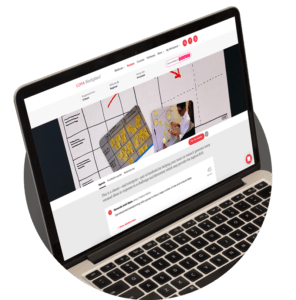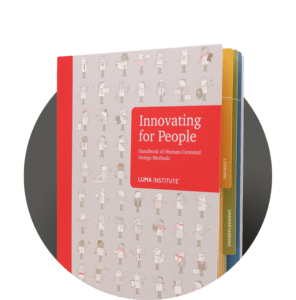Method overview
Sometimes the collective voice of several speaks more powerfully than a single voice alone. Round Robin allows for the generation of fresh ideas by providing a format for group authorship. As an idea is passed from person to person, it can grow and change in unexpected ways to uncover some wonderfully original concepts.
As an ideation method, Round Robin is a superb way to get a small team of people to create a collection of atypical ideas around a particular challenge, because it requires that participants inherit and build upon each other’s ideas. The power of this method is that ideas emerge from collective input—everyone takes a turn. As you inherit another’s idea, think critically about what you’re given but don’t let it limit your own thinking. Even if the idea seems strange or impossible, it may contain the seed of a successful conceptual direction. The best result is a set of ideas that no single person could have imagined on her own.
The benefits of this method
- Invites input from all team members.
- Diminishes overbearing opinions.
- Facilitates group authorship.
- Helps you think of new and unusual ideas.

Quick guide
- Identify a design challenge in need of fresh ideas.
- Make a worksheet folded into four parts.
- Form teams with 4-5 people. Hand out worksheets.
- Instruct each person to write down the challenge.
- Ask them to write down an unconventional solution.
- Instruct everyone to pass each worksheet to the left.
- Ask them to write a reason why the proposal will fail.
- Instruct everyone to pass each worksheet again.
- Ask them to write down a way to resolve the critique.
Helpful hints
- Limit the time for each step (approx. 2-3 minutes).
- Encourage the participants to suggest wild ideas.
- Invite a presentation and discussion of new ideas.
Combining LUMA methods into design recipes
The methods in the LUMA System are great on their own, but they are really powerful when combined into design recipes. Just like when you combine ingredients to make a tasty meal, you can also combine design methods to address challenges such as improving workplace culture or uncovering customer insights.
An example of a recipe from LUMA Workplace®:


Want to learn more about LUMA methods?


